Our GRAYL UltraPress Review: It’s the Best One Yet
We may earn a commission from purchases you make after clicking links on this site. Learn more.We’ve been fans of GRAYL’s approach to creating safe, drinkable water for many years now. The company first came out with a coffee plunger-style water purifier bottle a decade ago, and has been refining its products ever since.
We’ve used most of the different models over the years, and they’ve consistently got just a little better and easier to use each time. The new UltraPress continues that trend, and adds a bunch of safety and quality of life improvements as well.
TL;DR version: it’s the best GRAYL filter yet. For the longer story, read on.
- Weight: 12.5 oz (354g)
- Height: 9.8 inches (24.8cm)
- Diameter: 3 inches (7.5cm)
- Capacity: 16.9 fluid ounces (500ml)
- Removes: 99.9%+ of waterborne viruses, bacteria, and cysts
- Filter Lifespan (average): 40 gallons (150 liters)
How the GRAYL Works
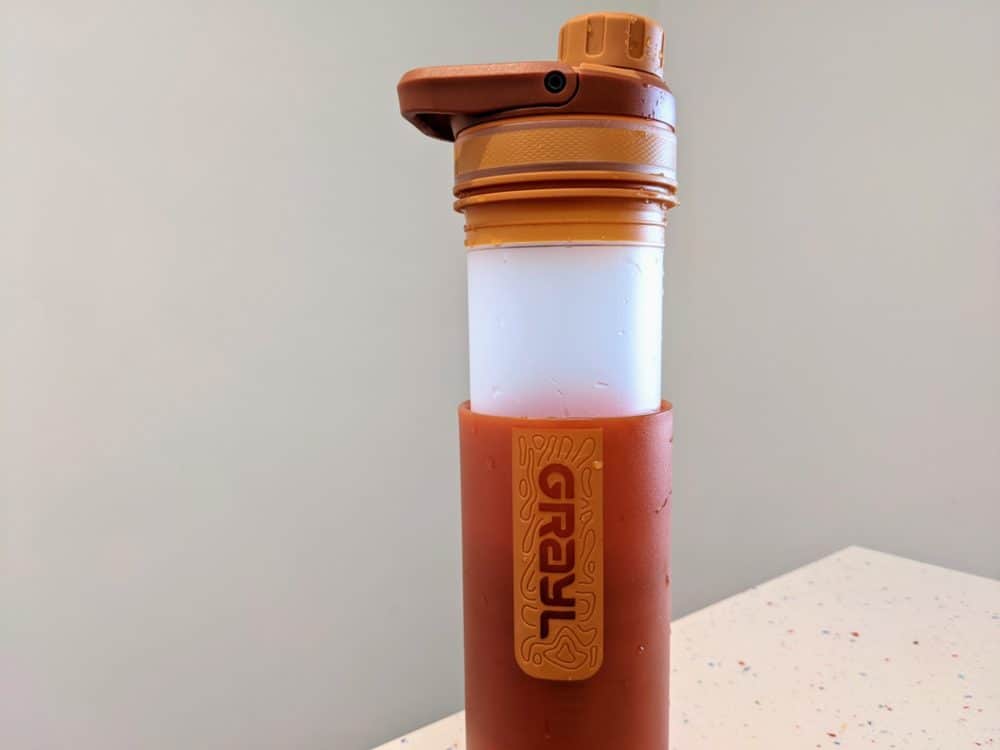
If you’ve never seen a GRAYL purifier before, it doesn’t look wildly dissimilar to the kind of water bottle you’d take to the gym. The interesting bits are on the inside, mostly hidden away by the opaque plastic of the outer material.
The purifier has two sections: the outer container that you fill with water from whatever dubious source you have available, and an inner container that holds the purified version. The filter cartridge screws into the bottom of the inner container, and typically stays there until it’s time to replace it.
To turn dirty water into clean, you simply insert the inner container into the outer one, unscrew the lid a little, and press down slowly and firmly to force water through the filter. With clear water and a new filter, the process takes around 10-15 seconds.
The company recommends only using a clear water source: the filter can handle sediment and other impurities to some degree, but it’ll shorten its lifespan. The more you use it, the more force you’ll need to push down the lid. Once it’s taking half a minute or more to finish purifying, it’s probably time for a new filter.
It’s also important not to let the filter freeze if you can possibly avoid it. If it happens once, you’ll probably be fine, but more than that and you’ll likely need to replace it. Keep your GRAYL away from the hotel freezer, and if you’re camping in very cold conditions, stick it at the bottom of your sleeping bag.
UltraPress Features
When GRAYL first started out, it had a single model of purifier. Over time, it expanded the range into two distinct versions: the Ultralight that held around 16oz of water, and the bigger, heavier GeoPress that held 24oz.
The GeoPress wasn’t just a larger version of the Ultralight, though: it had a few other features that made it more appealing. The UltraPress is a combination of the two in both name and design, mixing the new quality-of-life improvements of the former with the smaller, lighter size of the latter.
To start with, the fixed, curved handle of the Ultralight has gone, replaced by a larger flat handle which rotates through 90 degrees. It’s a much better approach, since it lets you use it to carry the purifier when you’re walking around, then rotate it down so you can press on it when purifying.
Combined with the extended flat section on the lid, the UltraPress is noticeably easier to push down than its predecessor. You’ll appreciate the difference, especially as the filter gets older or when you’re using it a few times in a row.
In a much-requested feature from the GeoPress, the lid now houses a spout with a screw-on cap. That small change makes a huge difference when you’re drinking from the GRAYL while on the move. The cap isn’t attached by a lanyard or clip, though, so keep hold of it when you’ve taken it off!
You can still remove the lid from the inner section as well, but there’s no particular need to, especially when filling the outer section. That helps prevent contaminated water drops from entering the clean section when screwing the lid back on, a potential issue with the Ultralight.
Other than that, the details of the UltraPress are pretty similar to earlier models. The capacity has increased slightly, to 16.9 fl oz (500ml), and the weight has nudged up slightly to go with it, to 12.5 ounces. The filter is the same as the Ultralight (they’re interchangeable), and handles an average of 40 gallons before needing replacement.
All GRAYL purifiers filter out bacteria (99.9999%), viruses (99.9%), and protozoan cysts (99.9%), along with microplastics and sediments. As mentioned above, though, cloudy or dirty water will likely shorten the filter lifespan, so look for clear water where you can.
Chemicals, pesticides, heavy metals, flavors, and odors are all absorbed to some degree as well, although because there’s such a wide range of these, the company doesn’t make specific claims about exactly which ones are removed, or how well.
Given the rugged plastic exterior and lack of moving parts, the UltraPress is pretty durable, rated to handle 10-foot drops onto concrete while full of water. As long as you don’t accidentally kick it down a mountainside, it should easily deal with the knocks and bumps of hiking and travel alike.
Initial Testing
So much for all the theory: it was time to put the UltraPress through its paces.
There was no assembly required: the purifier came with the filter attached, along with a small instruction booklet. To make sure everything was in working order, I tested it all out at home before heading into the great outdoors.
First, I filled the outer shell up with tap water to the line marked on the side, then slightly unscrewed the cap on the inner section and rotated the handle to sit parallel to the ground.
With the outer shell on my kitchen floor, I placed the inner section inside, and started slowly pressing down on the lid. The process took a little over ten seconds, and required less downward force than with the earlier models.
Even so, it’s much easier when you can put your full bodyweight into it: you’ll notice a difference between having the GRAYL on the ground, for instance, versus at waist height. The lower you can sit it, the better.
A small amount of water lapped over the side as I started to press down, and a small amount was also left in the bottom of the outer shell when I separated the two parts. Even so, I measured almost exactly 16.9 fl oz (500ml) of purified water in the inner container when I was done.
As with earlier models, I found that less water spilled over the side and the process required less force when I unscrewed the cap further than the half-turn listed in the instructions. If you’re having problems with either issue, try unscrewing a full turn, or a little more.
Out in the Real World
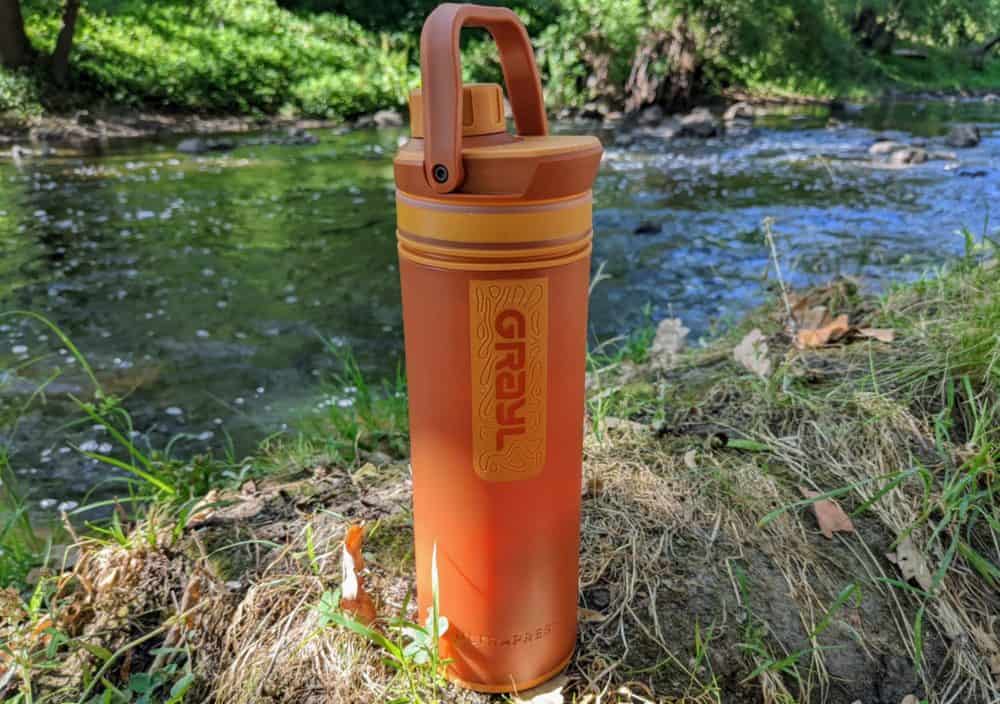
Testing in my kitchen was all well and good, but unless your tap water is particularly gross, your GRAYL is likely to see more action on the trail or when traveling overseas than it will in your home.
That’s why, one warm summer morning, I tucked the UltraPress into the side pocket of my daypack and set out on a multi-hour hike, knowing there wasn’t enough water inside it to see me through. Much of the route was alongside a river, though, which seemed like as good a way as any of performing a real-world test.
Sure enough, somewhere around the halfway mark, I drained the last drops from the bottle and dropped down off the trail to the riverbank to refill the outer container. The bank was quite muddy, so I just found a flat rock nearby to set things up. Purification again took under 15 seconds, and the whole process was done in less than two minutes.
Taking a few mouthfuls of the water, I couldn’t detect any difference between that and what had come out of my tap a couple of hours earlier. Apparently my stomach couldn’t either, since I had zero problems with that side of things afterward.
None of this came as a great shock, of course: I’d had no issues with any previous GRAYL models, and the purification process on the UltraPress hasn’t changed. Thanks to the pandemic I haven’t (yet) been able to test the UltraPress while traveling overseas, but given how well the previous model worked in Mozambique, I don’t have any concerns about its effectiveness there either.
In terms of weight, while it’s slightly heavier than the Ultralight, we’re only talking about an ounce and a half here. I was honestly surprised it was even that much: I didn’t notice the difference in my hand or my backpack.
Being as relatively small and light as it is does come with one limitation, of course: the amount of water you can carry inside. A pint is fine if you’re walking for an hour or two in relatively cool conditions, but you’ll need a lot more on longer hikes or in hot weather.
You could buy the larger GeoPress if you wanted to, but I just carry an extra container instead. On long or multi-day hikes, I’ll take my regular two-liter (70oz) hydration bladder; for day hikes or when traveling, I drop a little roll-up Vapur water bottle in my daypack instead.
In either case, I’ll just run the GRAYL through as many times as necessary to fill up the bottle or bladder whenever I get to a water source. Sure, it’d be nice to be able to purify all the water at once and not carry an extra container with me, but it also means not having to carry a large bottle when I don’t need one. All in all, it’s a wash.
Get regular updates from the world of travel tech and remote work
News, reviews, recommendations and more, from here and around the web
Verdict
I was impressed with the UltraPress. It hasn’t changed all that much from the previous model, and in this case, that’s definitely a good thing. The urge to fix things that aren’t broken is often difficult for companies to resist, but in this case, GRAYL has managed it.
The changes that were made (the addition of a drinking spout and a much better design for the lid and handle) are genuine improvements. Being able to hold a little extra water inside is useful as well, and justifies the minor size and weight increase that goes with it.
As a result, the UltraPress is easy to recommend for hikers and travelers looking for a simple, effective water purifier bottle. While some would benefit from the greater capacity of the GeoPress, the smaller size and lower weight of the UltraPress is likely to be more important, more often.
It’ll be coming with me in the future whenever I’m going somewhere without potable water, whether that’s in the middle of nowhere on a backcountry hike, or to a country where I don’t have a lot of faith in the safety of what comes out of the tap.
Product image via GRAYL, lifestyle images via author

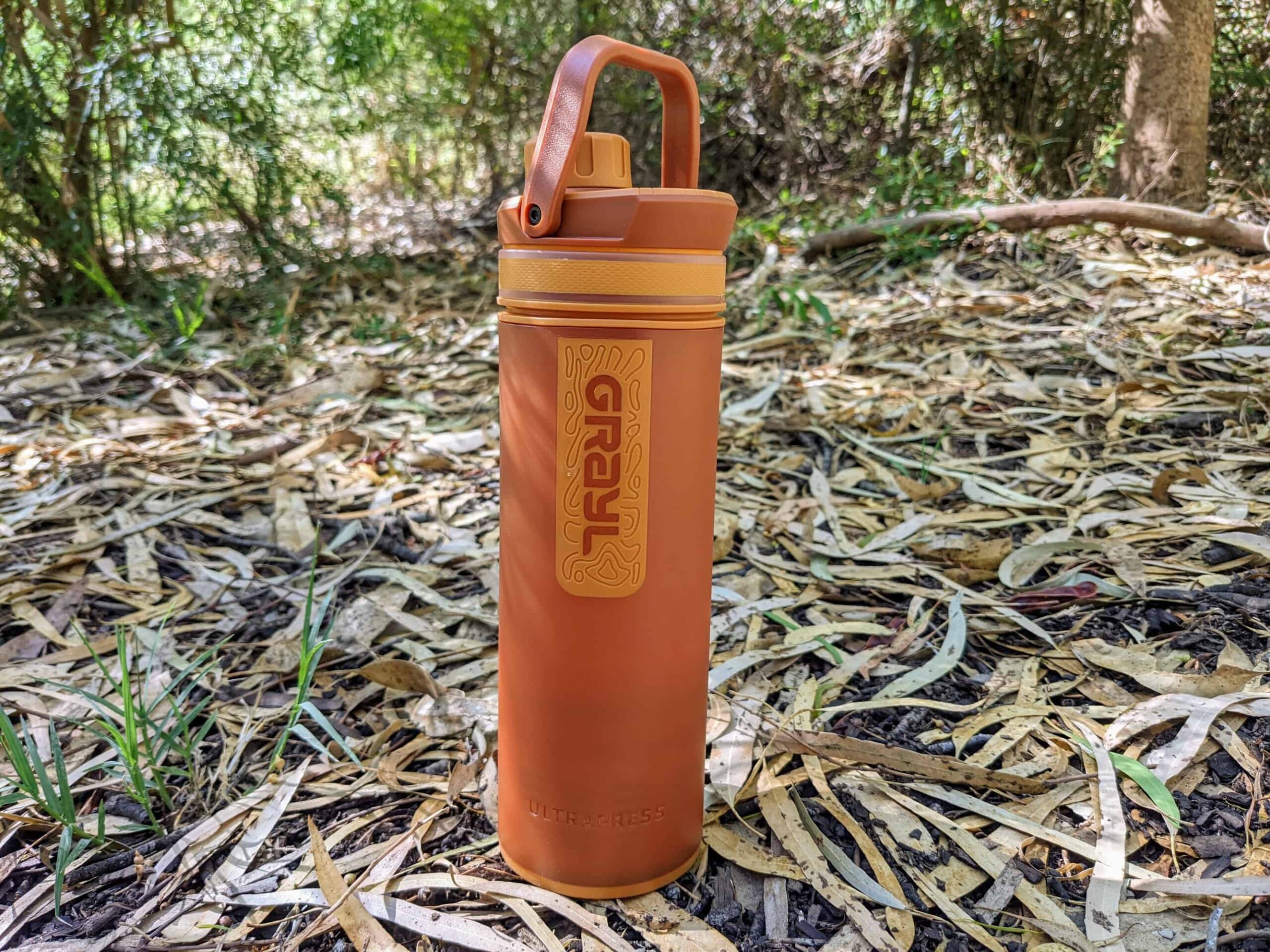
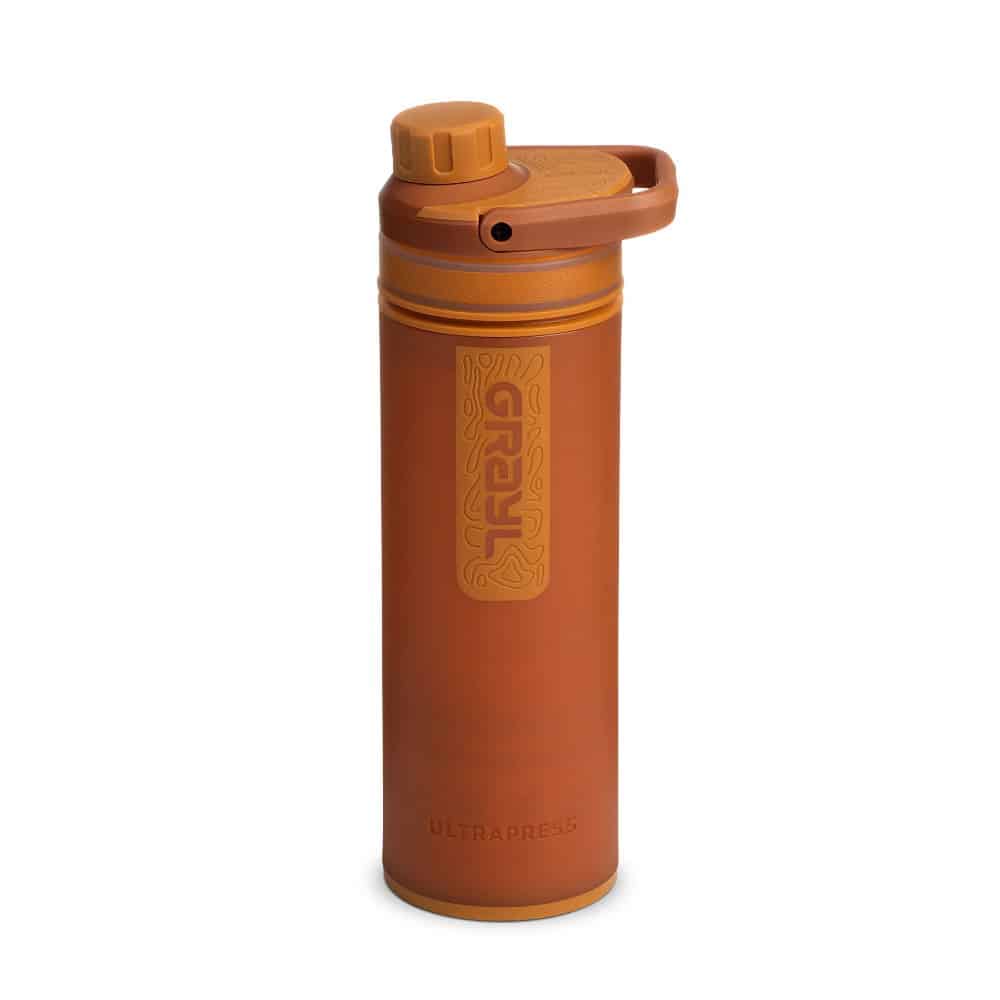
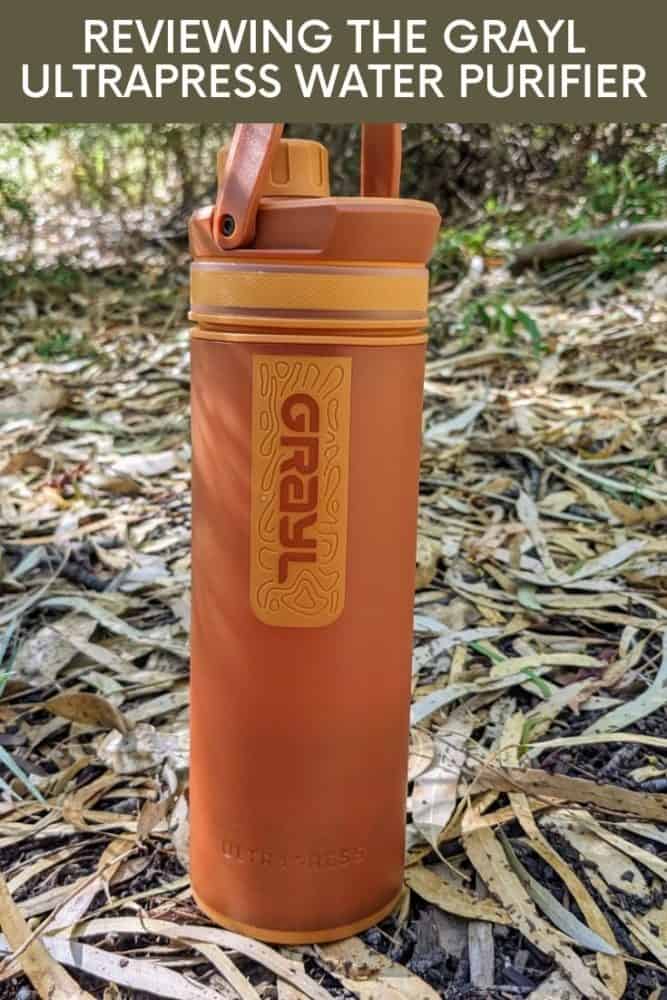
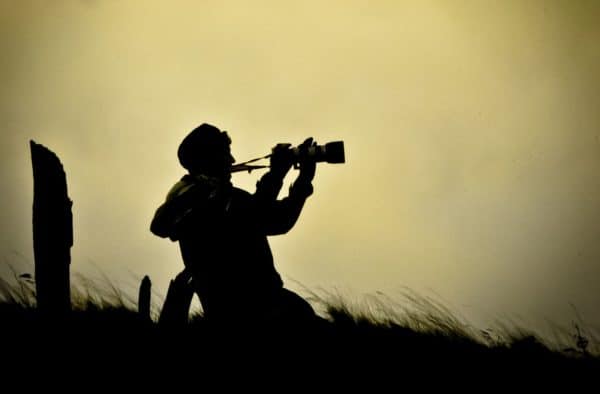
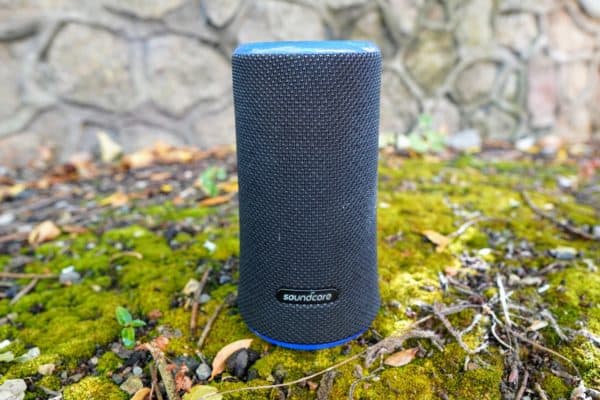
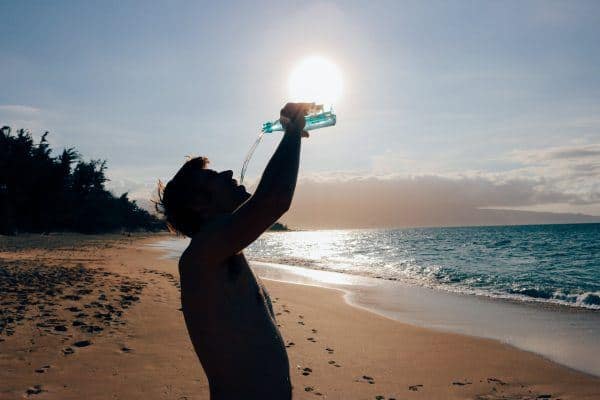
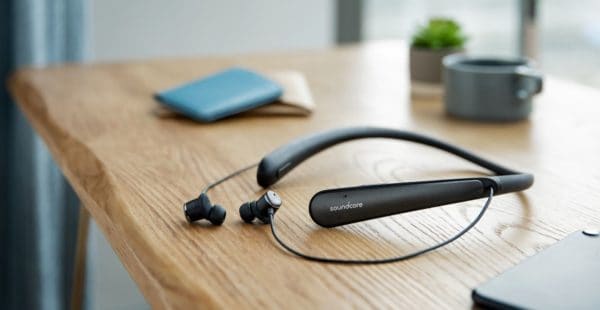
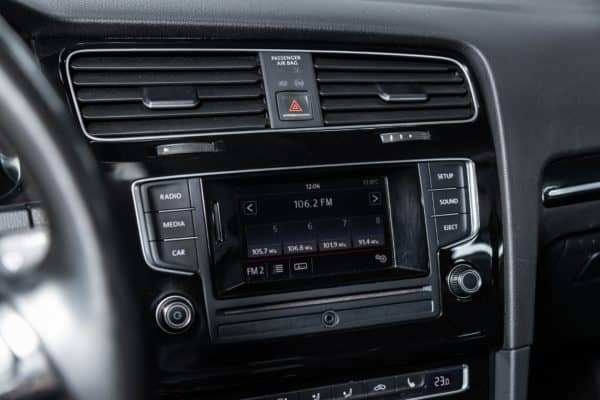
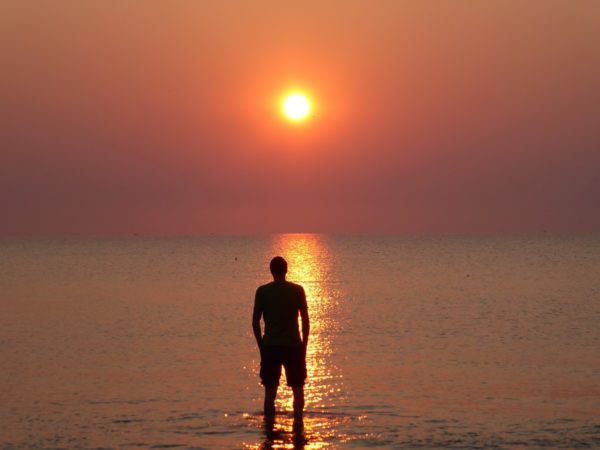
We settled on this after some research and have been travelling around East Africa with it for the last few weeks. Its been brilliant, I really like how you can filter water and decant it into other bottles. Well worth the purchase price.